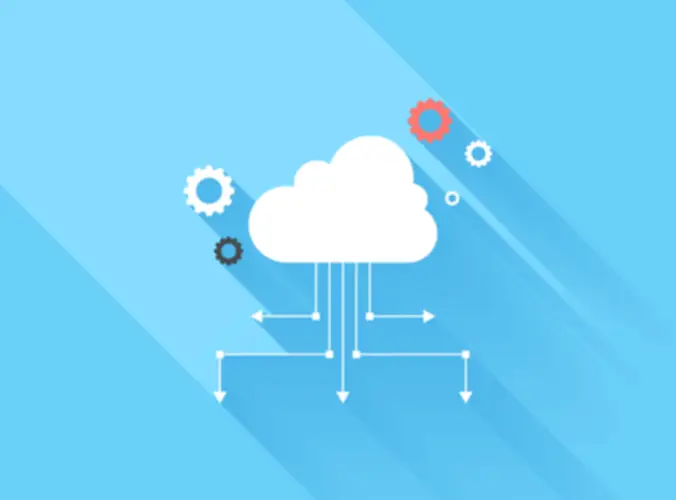Cause and Effect The relationship between a specific outcome and all the variables that have an effect on it’s shown graphically utilizing a black box testing approach known as a graph. It is incessantly known as the fishbone diagram or the Ishikawa diagram due to how it appears and since Kaoru Ishikawa invented it. Trigger and Effect A graph is used in a graphing-based approach for example the outcomes of a quantity of input condition mixtures. To get hold of the take a look at cases, the graph is then remodeled into a call desk. Cause-effect graphing is used since boundary worth evaluation and equivalence class partitioning strategies don’t account for the combination of input circumstances. But cause-effect graphing is utilized since it could be needed to examine some essential behavior when certain combinations of enter circumstances are taken into consideration.
Useful Testing – Trigger Impact Graphing
Nevertheless, the technique is useful because of the fact that it provides a transparent and concise technique of testing, which in flip can help to create simpler and reliable software systems. The graph itself normally contains nodes which are causes (inputs) and nodes which are results (outputs) related by strains that present the relation between the sure cause and sure effect. Effect E3 – Shows Therapeutic Massage Y- The logic for the existence of impact E3 is “NOT C3” meaning trigger C3 (Character in column 2 is a digit) must be false. In other words, for the existence of effect E3, the character in column 2 shouldn’t be a digit. We can see within the graph, C3 is connected via NOT logic with effect E3. So each time we have to confirm some crucial eventualities consisting of combinations of input criterias, then the cause effect graph is used.
Software Program Testing Mcq
If the enter in column 2 is incorrect, i.e. input just isn’t a digit, then message Y might be https://www.globalcloudteam.com/ displayed. Cause-Effect graph technique converts the requirements specification into a logical relationship between the input and output conditions through the use of logical operators like AND, OR and NOT. In the upcoming article I will cowl the next fascinating check case design method called as State transition testing method. Test circumstances are designed to exert divisions of valid values, and invalid enter values. As properly test cases may be designed to verify that invalid output values cannot be induced.

The graph proven above is the ultimate cause-effect graph obtained for the given downside. 4) If the single-fault assumption is warranted, boundary value analysis (BVA) and robustness testing are indicated. To remedy this problem utilizing a management flow graph, we might first summarize the totally different circumstances, and the events. These constraints are between the causes C1, C2, and C3, such that at least cause effect graphing one of them is always equal to 1, and therefore all of them simultaneously can’t hold the worth 1.
- 5) If the multiple-fault assumption is warranted, worst-case testing, robust worst-case testing and determination desk testing are similar.
- Trigger Impact Graphing is a software program engineering approach which makes use of graphs to explain and depict causes and effects.
- It is a visible representation of the logical relationship between causes and results, expressible as a Boolean expression.
- This approach provides a visible representation of the logical relationships between causes and effects, expressed as a Boolean expression.
- These constraints are between the causes C1, and C2, such that one and only considered one of C1 and C2 ought to be 1.
A �Cause� represents a definite input condition that brings about an inner change within the system. An �Effect� represents an output situation, a system transformation or a state resulting from a mixture of causes. A “Cause” stands for a separate enter condition that fetches about an inside change in the system. An “Effect” represents an output condition, a system transformation or a state ensuing from a mix of causes.
Cause-Effect Graph graphically shows the connection between a given consequence and all issues that manipulate the end result. It is also called Ishikawa diagram due to the way it seems, invented by Kaoru Ishikawa or fish bone diagram. Equal partition makes use of a mannequin of the component that partitions the output and enter values of the component. The enter and output values are derived from the specification of the component’s behaviour. AnalysisBoundary Worth Evaluation uses a mannequin of the part that partitions the input values and output values of the component right into a amount of ordered units with identifiable boundaries.
The effect is not necessarily an output (it may be an error message, a show, a database modification, or even an inner test point).

This Content Material Is Actually Useful One Can Simply Perceive Cause-effect Graph Testing
The graph obtained is transformed into a choice table which in turn can be utilized to design the test cases. The major advantage of the cause effect graph methodology is that it helps to detect wherever there exists incomplete or unclear necessities. The mask constraint states that if effect 1 is true then effect 2 is false. Notice that the masks constraint pertains to the consequences and not the causes like the other constraints. A tester should translate causes and results into logical propositions before making a cause-and-effect diagram. Functions are deemed defect-free if they provide output (effect) in accordance with input (cause); otherwise, they are forwarded to the development staff for rectification.
Weve began with describing what’s a cause impact graph, the means to create check instances from a trigger effect graph, What are the notations used in trigger effect graph, and an example on cause impact graph. It is smart to maintain practicing what youve discovered and exploring others relevant to Software Testing to deepen your understanding and broaden your horizons. These constraints are between the causes C1, and C2, such that if C1 is the same as 1, then C2 should also be 1. It isn’t attainable for C1 to have the worth 1 with the C2 having the value as 0. These constraints are between the causes C1, and C2, such that one and solely considered one of C1 and C2 ought to be 1.
Normally the graph reveals the nodes representing the causes on the left aspect and the nodes representing the results on the best side. There could additionally be intermediate nodes in between that combine inputs using logical operators similar to AND and OR. Cause Impact Graphing is a software program engineering method which uses graphs to explain and depict causes and results. A cause impact graph is a strategy which helps to generate a high yield group of test cases. This methodology has come as much as eradicate the loopholes of equivalence partitioning, and boundary worth evaluation where testing of all the combos of input circumstances usually are not feasible.
For each identified boundary three take a look at circumstances should be produced comparable to values on the boundary and an incremental distance either facet of it. This rising distance is described because the smallest essential value for the info kind into consideration. Identify and describe the enter conditions (causes) and actions (effect). Effect E1- Update made- The logic for the existence of impact E1 is “(C1 OR C2) AND C3”. For logic AND C3 (Character in column 2 should be a digit), C3 have to be true. In different words, for the existence of impact E1 (Update made) anyone from C1 and C2 but the C3 should be true.
This technique offers a visible illustration of the logical relationships between causes and effects, expressed as a Boolean expression. A choice table is a tool that’s generally used in conjunction with the cause-effect graphing approach in functional testing. It is a tabular illustration of all attainable inputs and outputs for a selected system or element, primarily based on the causes and results identified within the cause-effect graph. Such model should include bounded divisions of ordered enter and output values.
These constraints are between two causes C1, and C2, such that both C1 or C2 can have the worth as 1, each concurrently cannot maintain the worth 1. We present free technical articles and tutorials that can assist you to to get up to date in business. The graph can at all times be rearranged so there is only one Static Code Analysis node between any enter and any output. This method aims to scale back the number of test cases however still covers all essential test circumstances with maximum protection to achieve the specified utility quality. The primary benefit of cause-effect graph testing is, it reduces the time of test execution and cost.
A developed software program goes by way of varied testing stages to validate whether it is satisfying all the necessities and conditions. In the black field strategy, the generated output from enter information units are verified. The trigger effect graph is probably one of the methods which comes underneath the black box testing. It is an approach where a graph is used to depict the states for multiple combinations of inputs. Cause Effect Graphing is a priceless technique for practical testing that permits software builders to understand the relationships between the inputs and outputs of a system or its element.
